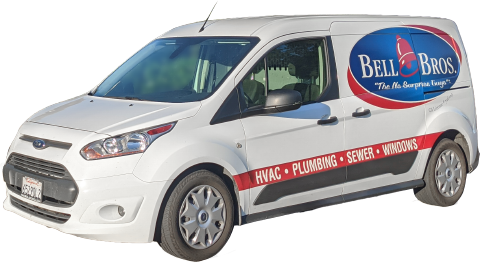What Not to Fix Yourself: Tales of Sacramento Area HVAC DIY Gone Wrong
We’ve run into a more than a few do-it-yourselfers over the years, but it seems like they’ve grown in number since the internet has become so prevalent in our everyday lives. There are guides online for just about anything, many of them convincingly written on reputable websites. As tradespeople we tend to be do-it-yourselfers ourselves, so we get the impulse. But we also know bad advice when we see it, and lots of the do-it-yourself guides you read online contain bad advice. Today we’re sharing three examples of online advice gone wrong, partly to amuse, but mostly to inform. Some things, kids, you really shouldn’t try at home.
New Thermostat Trouble
One Stockton homeowner called us to replace his thermostat. He’d already removed the old one, but he wasn’t comfortable installing a new one himself. Our tech got there and noticed that the one he had taken off looked brand-new, so he asked what the trouble was. Turns out, it was new–or it had been when the homeowner had attempted to install it! Thermostats are not terribly intuitive, and the client had hooked his up wrong. That happens a lot on HVAC DIY jobs. Sometimes nothing happens, and people just try it again until it works–and sometimes it starts smoking! His thermostat had done just that; he immediately turned off his breaker and called us!
While a smoking thermostat may sound like a bad break, it was the best possible result. He’d known immediately that something wasn’t right, and had been able to turn off the breaker and call in a pro without hesitating. He got lucky–he was out a thermostat, but he hadn’t damaged anything else. Wiring the thermostat wrong can cause electrical issues in your home, as well as hurt your furnace when you go to turn it all back on–and that’s a fix that’s much more expensive than the thermostat!
Thermostat replacement tends to be fast and cheap when you have a pro handle it, and it’s not worth risking your HVAC system (or scorch marks on the wall) over. After we gave the client the bill, his eyebrows went up. “If I’d known it was going to be that cheap, I’d never have tried it myself in the first place!”
Warranty Worries
Not all stories end as well for the homeowner’s wallet. Our next HVAC DIY cautionary tale involves a homeowner who’d attempted major AC work himself. His system was old, and he decided to add freon himself to “kick it up a notch” as Emeril might say. Freon recharges are a standard part of air conditioner service, but there are a lot of factors involved in deciding if a recharge is right–or even possible. When he finally called us, it was too late–he was way over his head in air conditioner repair and had damaged the system in the process. Perhaps worst of all, he’d violated both the manufacturer’s and the installer’s warranties in the process–which had previously been intact. All in the name of saving money…
Sound like a worst-case scenario? We actually consider this another case of incredible luck! Refrigerant is toxic; we’re still not sure how he got ahold of non-automotive freon in the first place! In the state of California, only licensed professionals can legally purchase that stuff. And the electricity he was playing with in the AC is nothing to joke about either–he could have injured himself. The moral of the story is, don’t attempt a major AC overhaul. It’s not worth the risks associated with electrical shock, toxic exposure, warranty violation, or navigating what we joke about as the “freon black market.” Call a pro and have us do the work for you—before the damage is done!
Burning It Down
Our final tale of DIY-done-wrong comes from one of our guys who was plumbing out a remodeled bathroom. The demo guys had already demolitioned the sheetrock behind the shower, and they mentioned to our guy that the homeowner had some questions about the plumbing since the previous owner had done all the work themselves. He found that the plumbing was totally wonky which wasn’t a big surprise. But the fact that the wood studs near the plumbing were covered in scorch marks sure was!
When you solder copper pipe together, you use a torch to do so. The previous homeowner had clearly not been a dab hand at it and had burned the studs black all up and down the wall in the process. It looked pretty scary, but we were able to show the new owner that the damage was only on the surface–and was not the sign of more serious issues. Soldering is a fun skill to learn, but if you’re going to do so, make sure to practice plenty in the backyard before taking it inside!
HVAC DIY–Saving Some Money, or Risking More?
The moral of these stories is simple: Don’t work on stuff if you’re not 100% familiar with what you’re doing. Even with the internet, it’s just not worth it if you haven’t done it before. And there are many things that you shouldn’t work on anyway–like air conditioners, water heaters, and other appliances that can be dangerous or carry warranties or both. It pays to have the pros handle your heavy lifting, and we love the work we do. We understand HVAC DIY–but before you pick up that wrench (or black-market freon), give us a call and ask whether you should be going it alone on your project!

